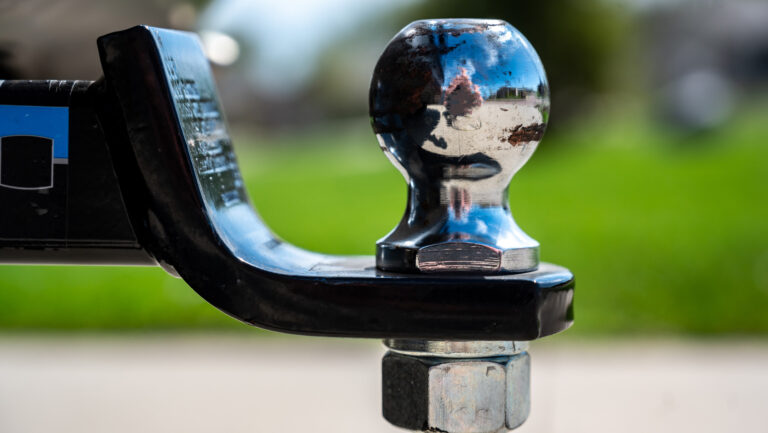Create a Pre-Trip Checklist
You owe it to the other drivers you will be sharing the road with to make sure your trailer is road-worthy every time you take it out. Check the following items before taking to the streets:
• The ball and the coupler are compatible sizes.
• Chains, wiring harness and breakaway cable are all connected.
• Ball mount pin is in place.
• Locking lever is down and pin installed.
• Ball is fastened securely to the ball mount.
• Tongue jack is raised.
• Tires are properly inflated and lug nuts are tight.
• Lights are all working.
• Ramps and/or gates are in place and secure.
• Load is fastened and secure.
• Brakes are working.
Always Pin the Coupler
Poor bearing maintenance is the most common cause of trailer breakdowns, the second most common cause is the trailer’s coupler coming loose from the ball mount. Make sure that you are not hooking up a trailer to an undersized ball.
A Trailer Should Ride Level When Loaded
Trailers are designed to ride level. A trailer that is out of level just will not pull as smoothly or as safely. Also, hauling a tandem axle trailer unevenly will cause more wear and tear on one set of tires and suspension than on the other.
The “drop” of the ball mount determines how high or low the tongue of the trailer will ride. Here’s a good way to estimate the amount of drop your ball mount needs:
- Measure up from level ground to the top of the receiver
- Measure up from the ground to the bottom of the coupler on the trailer
- Subtract the first measurement from the second.
But that will only get you close. The problem with this method is that it doesn’t take into account the tongue weight of your particular trailer, or the stiffness of your truck’s rear suspension. The only true way to get your trailer to ride level is to hook it up to your truck, fully loaded and using a ball mount you think has the proper drop. If the trailer is level, great; if not, adjust accordingly.




